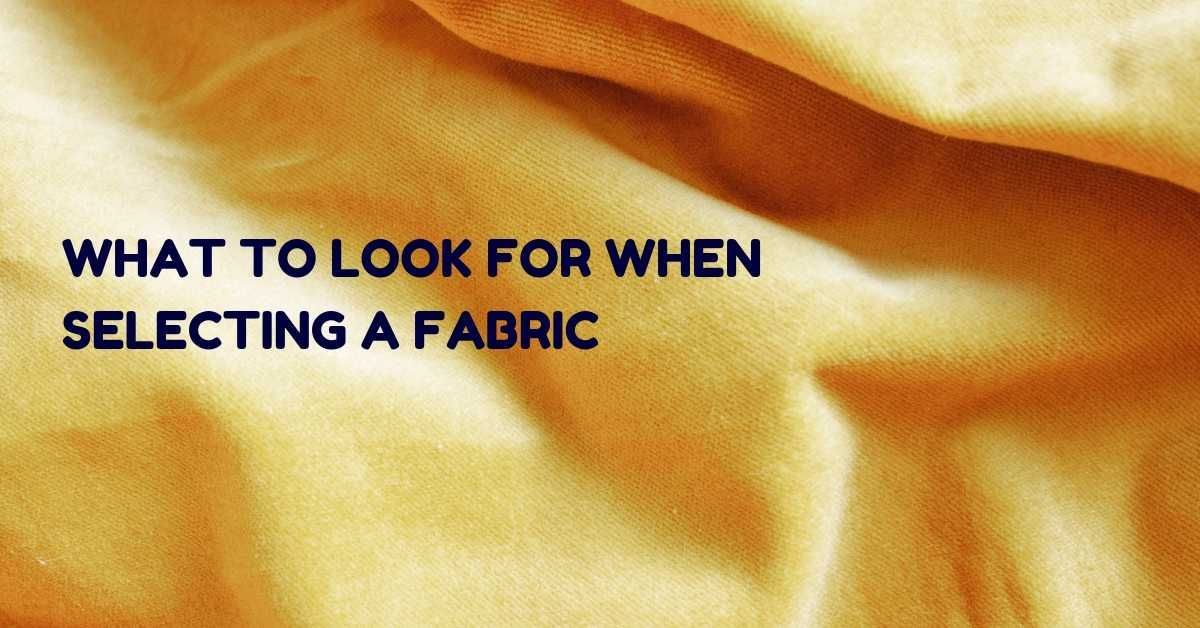What Does All 4 Way Stretch Fabrics Do?
What Does All 4 Way Stretch Fabrics Do?
Blog Article
10 Easy Facts About All 4 Way Stretch Fabrics Shown
Table of ContentsNot known Factual Statements About All 4 Way Stretch Fabrics Unknown Facts About All 4 Way Stretch FabricsSee This Report on All 4 Way Stretch FabricsGet This Report about All 4 Way Stretch FabricsSome Known Questions About All 4 Way Stretch Fabrics.Not known Details About All 4 Way Stretch Fabrics 3 Simple Techniques For All 4 Way Stretch Fabrics
As I also desire UV defense from my garments when I go out, I would certainly pick a densely woven cotton fabric. Also the underwear is better in cotton (No spandex bands anywhere near the skin). Take a look at the most effective textiles suitable for making summer clothing. Another factor to consider when buying the fabric is the way it will after washing.A sure thing would be to purchase least 10% additional material. If you can get preshrunk material, this is the very best. Preshrunk material will have labels that will say" and so on. If you are looking for a fabric that will certainly not extend or lose shape, you can seek the "anti-sag" tag.

If you are matching the color, like selecting the lining for the primary textile or selecting material to add as trim, this is particularly vital. The material showrooms will typically have a light well where you can see the material in sunlight (or a window with great light from outside).
How All 4 Way Stretch Fabrics can Save You Time, Stress, and Money.

Many materials are about 44 large. When you go to buy material, price quote exactly how much you want initially and after that go to the store.
These are readily available in the stores I regular as cut pieces they are primarily prized reduced and several of them, when they are last off the screw, prized extremely reduced. You will certainly need to ask the salespersons for items like that. Some fantastic bargains can be had by doing this. In dressmaking, we purchase fabric by the yard/meter.
How All 4 Way Stretch Fabrics can Save You Time, Stress, and Money.
In a quarter of a yard, you get a 9 by 44 strip of fabric, which is about 22 cm in size. It is always much better to get bigger towel. According to the size of materials, they may be called single-width and double-width. Single width is generally approximately 49 inches in width and double size as much as 60.
You can learn even more concerning lawn to meter conversion right here. Have a look at this blog post on reviewing a measuring tape Select materials that are not also difficult or stiff, or you wouldn't fit in them. Linen, Denim, flannel, For colder environments, pick woollen (100% as well as woollen blends) woollen tweeds, wool crepe; it essentially relies on what trousers you are speaking about Tailored pants, Unstructured Pant, Combined, Denim.
All cotton textiles are excellent for kids. Knit textiles are likewise excellent for kids you can go for woollen knits.
What Does All 4 Way Stretch Fabrics Mean?
Cotton yard fabric in appealing prints is terrific. Silk jersey is a fantastic material for sewing skirts, as is Ponte Roma knit textile.
Drapey rayons, soft wool, lycra blends, and stretch velours are all appropriate for stitching skirts. Woollen (Wool crepe has an excellent drape and offers sufficient structure for jackets; woollen tweeds are great as well), Bed linen & Flannel. Raw silk, satin, taffeta, velvet, Shoelace, silk chiffon, and Organza are all wonderful for making dresses.
You can buy medium-weight materials with some spandex/elastane included for a suitable bodycon-type gown. For drapey dresses, you can pick lightweight textiles. Jacket has a drapey fit such as this. Crepe, challis, and charmeuse are all drapey materials suited for this style. Have a look at these blog posts: Finest material for making laid-back dresses and tops; Names of various dresses. Rayon, Acetate, and cotton lining products are popularly used.
Lightweight cotton material, Cambric, Chintz, Twill, Faille, Seersucker, Poplin, lightweight woven broadcloth, batiste, bed linen, eyelet are great for making shirts and blouses. I enjoy chiffon shirts. Smooth satin fabric is great for making ventilated tops. Have a look check here at the article on the 7 finest textiles for making t-shirts. Making stoles and scarves need various factors to consider for the textile check out this article on the textiles for making headscarfs When getting formed fabric (most of the formed fabric comes with a size of 45 or 54 inches), there will certainly be pattern repeat in these fabrics, and this must be thought about when reducing textile along with getting them i.e., if you desire to match the patterns at the joints.
The Single Strategy To Use For All 4 Way Stretch Fabrics
The themes will be distributed in a planned fashion on the fabric. You might see often If the print is not put on the textile appropriately, it can not be matched or lined up when created without distorting the fabric and the hang of the garment.


The material weight is dependent on several aspects like the weave, fiber kind, and so on and is generally denoted by GSM. GSM can differ from 60 -700; 700 being the GSM of very high-quality woolen fabric.
However one thing you need to bear in mind is that greater textile weight does not signify greater textile quality (equestrian fabric). It simply is an indication of the suitability of the fabric for a certain job. You can not select high fabric weight material denim for a lightweight floating shawl. Knowing the fabric weight works when comparing the same sort of textiles, but even this will certainly rely on its application.
Take a look at the list of the 70+ various textile coatings and treatments. In a nutshell, the most crucial standards to look for in the material you get are as complies with. The number of strings per inch of textile (yarns-per-inch). Higher the thread matter higher the number of strings woven per inch, and the greater the high quality.
More About All 4 Way Stretch Fabrics
This is really crucial in any kind of material. In premium textile, this equilibrium (either in numbers or in size) will constantly be kept. Procedures utilized on material to enhance look and performance. The fibers that are woven to make the fabric will either be as a solitary hair or will certainly be created by combining 2 yarns (turned).
A two-ply yarn transcends to a single-ply yarn.
If you are preparing to begin a brand-new embroidery task, selecting a fabric will be one of the most crucial action as soon as you decide what you wish to make. After you've gone to all the difficulty and expenditure of getting the stitching maker you enjoy, a pattern you love, and a textile you enjoy, you want the finished product to be a success? One way to complete that is to start by seeing to it your fabric is genuinely best for the task.
What Does All 4 Way Stretch Fabrics Do?
Exactly how do you know which material will give you the finest outcome? Choosing a fabric simply since you enjoy the print or layout on it isn't necessarily the ideal method - cycling jersey.
In order to stay clear of doing a whole task for basically absolutely nothing, we have actually assembled some pointers to aid you make a decision which material is ideal for your job. Let's say you already have a task in mind; exactly how do you discover the best fabric for it?
Think of the features you want the finished item to have. Do you want a strong color or a print? If you are making a non-wearable thing such as a pillow cover or pot holder, utilize a sturdy textile such as canvas.
There is so much info out there about textiles, their characteristics, and their uses, it can get to be frustrating! So don't try to take it in all at the same time; just begin with the project available. Discover all you can about the material you use for this task.
Report this page